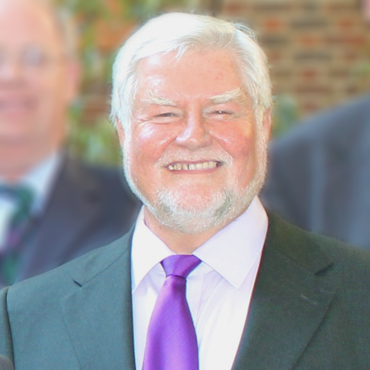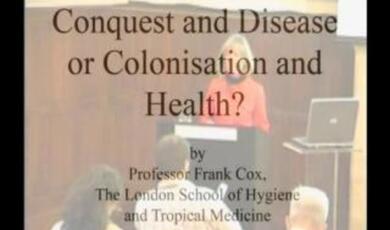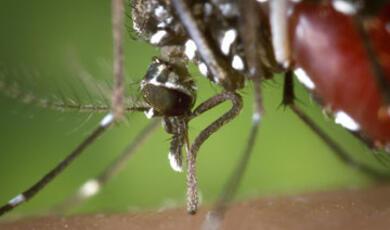The science of love
Share
- Details
- Transcript
- Audio
- Downloads
- Extra Reading
Glenn D Wilson is a reader in Personality at the University of London Institute of Psychiatry and one of Britain's best-known psychologists. He is the co-author of Fame - The Psychology of Stardom, The Science of Love and CQ - Learn the Secret of Lasting Love.
Dr Wilson is a regular on TV programmes such as Esther, The Time The Place, Vanessa and Trisha. An expert on individual differences, sexual behaviour, and psychology applied to the performing arts, he has published more than 150 scientific articles and 25 books, including Better Sex (with Chris McLaughlin), The Psychology of Conservatism, The Experimental study of Freudian Theories (with HJ Eysenek), Love and Instinct, The Great Sex Divide and Psychology for Performing Artists. He has lectured widely abroad, having been a guest of the Italian Cultural Association, and a visiting professor at California State University, Los Angeles, San Francisco State University, Stanford University, the University of Nevada, Reno and Sierra Nevada College. Apart from being a professional psychologist, Dr Wilson trained as an opera singer at the Guildhall School of Music and Drama in London and still undertakes professional engagements as an actor, singer and director.
Download Transcript
THE SCIENCE OF LOVE
Professor Glenn Wilson
Science and love might seem strange bedfellows. One is cold and analytical, the other warm, cuddly and mysterious. This may be why, until the last few decades, commentary on love has been left largely to poets, philosophers, and Hollywood film-makers. However, now scientists are getting in on the act, with their experimental procedures, questionnaires, brain-scanners and evolutionary theories. What have they found?
First, they have analysed what makes a person attractive. In the case of women, it is babyfacedness (women seem to have borrowed infant signals to evoke male protectiveness) and a low waist-hip-ratio (signalling high oestrogen and fertility). In the case of men it is mainly the tall, rugged, swarthy look (signalling testosterone and power) although certain feminine traits also appeal to the maternal instinct in women and signal personality traits like 'sensitivity', making a man more altruistic and easier to live with. For both sexes, symmetry and clear skin are attractive as markers of health and youth, hence reproductive fitness. Actually, youth is particularly important for women, because it connects more strongly with fertility. Women with high levels of circulating oestrogen for their calendar age are judged as looking younger.
Secondly, scientists have found out a lot about what is sexually arousing and how we choose a particular mate. Men are more easily aroused by visual signals at a distance; women often need reassurance and intimate touching. Both sexes seem to have a broad plan as to what is sexually exciting built into their brains as instincts, but these loose templates are subject to modification in the early years of life, through imprinting-like experiences. An important model for this imprinting seems to be the image of the opposite-sex parent. Kids reared by a sheep mother, and lambs reared by goats, grow up to fancy the wrong species. Similar effects are observed in humans; my own research, for example, found that a girl is more likely to fall in love with a boy whose eye-colour matches that of her father than her mother.
Pheromones and smell are also important for assessing the fitness of a partner. Obviously, halitosis is off-putting because it is often a marker of disease. But we may also prefer the smell of another person either because we detect genetic similarity (familial traits) or because they differ from us genetically in such a way that the immune spectrum of our offspring might be expanded (hybrid vigour). A particular gene complex called Human Leukocyte Antigen (HLA) that determines immune functions is apparently detectable through smell by potential partners. This may be, quite literally, a part of the chemistry of love. There is some evidence that we are more attracted to complementary (different) smells when in breeding mode (e.g., female mid-cycle) and fall back on familiar smells (those similar to our own) when we are more in need of security and support (e.g., at the end of the cycle or when already pregnant). As a general rule, we seek 'optimal outbreeding' - somebody rather like ourselves, but not too closely related.
Recent studies have examined what is going on with our brain and hormones when we 'fall in love'. Italian research suggests that the experience of romantic love has much in common with obsessional-compulsive disorder; both are characterised by low levels of serotonin - corresponding to a state of 'neediness'. Love can be observed through modern brain-scanning techniques, such as functional magnetic resonance imaging (fMRI), the usual approach being to use responses to pictures of close friends or explicit erotica as control stimuli. By comparison with the latter, higher social and emotional areas of the brain seem to be activated. The bonding that we commonly call love seems to involve a hormone called oxytocin, which is largely responsible for mother-baby attachments and which increases with exciting sexual activity and orgasm. Another hormone, vasopressin, seems to be involved in monogamous attachments. A gene concerned with production of vasopressin, if transplanted from the monogamous meadow vole, renders the normally promiscuous prairie vole faithful to one partner. This has been dubbed the 'Don Juan' gene, since it seems to be concerned with the desire for partner novelty.
Of course, the desire for multiple partners is more striking in male mammals. A farmer needs only one bull and one ram to be reasonably certain all his cows and sheep will be fertilised because they can be sure to do the rounds. Who can doubt there is some residue of this behaviour in humans? Many more men than women express a desire for sexual variety and most prostitutes are female; there are probably more 'rent boys' catering to gay men than there are successful gigolos. This is not due to social conditioning but is an effect of the male hormonetestosterone, particularly the way it affects brain development before birth. The small amounts of testosterone produced by women are largely responsible for such sexually predatory behaviour as they do show.
The evolutionary reason for this sex difference is clear. Males have the theoretical capacity to fertilise many females in parallel, whereas females can only be pregnant once at a time. It follows that males are more instinctively inclined towards promiscuity and harem-building that females, for whom the quality of the mate and his command of resources are more valued. The difference can be seen in sexual fantasies - those of men feature group sex with anonymous nubile partners; women fantasize more about sex with loving, attentive, socially powerful (e.g., famous) men.
Another male-female difference that is predictable from evolutionary theory is that of the motives for having affairs. Men most often do it 'just for a change', while simultaneously reporting their marriage as happy. Women have affairs for more complex reasons; they may be 'paying back' their husbands, find their lover superior in some way to their husband, or regard their marriage as unsatisfactory and are testing the water elsewhere, with a view perhaps to moving on. The focus of jealousy also differs; men go spare at the thought of their partner being penetrated by another man (fear of investing in offspring that do not carry their genes), while women are more upset by their partner being emotionally involved with another women (with a consequent threat to their support and provisions).
In humans, it is important to distinguish three main aspects of love, which show different time sequences. One is passion, a quality incorporating lust and infatuation that emerges fairly quickly and disappears almost as fast. The second is intimacy, referring to feelings of closeness and attachment; this peaks some time later in a relationship. The third is commitment, which involves caring for the long-term continuation of the relationship - if this fails, the relationship finally collapses. Since these three components, identified by psychologist Robert Sternberg in the 1980s, usually overlap to some degree, they provide a useful triangular system for classifying various forms of love. Relationships are described by the relative weighting of the three elements. Romantic love, for example, mostly comprises passion and intimacy, while companionate love is mostly intimacy and commitment. If there is only commitment, it may be described as 'empty love'.
The development of the early phases of love (passion and intimacy) has been studied under laboratory conditions. For example, it is possible to generate some degree of love by having a suitable pair of strangers gaze into each other's eyes and exchange intimate details about themselves. Add soft lights, music, and a glass of wine, and this is pretty much what goes on in a singles bar or on a date. Low light causes the pupils of the eyes to dilate, and since strong emotions have the same effect, this can be read (misattributed?) as interest in the other person, thus setting up a mutual spiral of attraction.
Other studies have noted that inducing any kind of strong emotion by external means (e.g., an injection of adrenalin) will also promote feelings of love. The emotional stimulation does not even have to be positive. Feelings of fear, aroused by crossing a dangerous swing bridge, have been shown to promote sexual excitement and the desire for attachment (as compared with subjects who have crossed a stable concrete bridge). This discovery has led some dating agencies to offer 'adrenalin dates', whereby the courting couple spend an evening taking thrill rides together at a funfair. The effect of fear on love seems to operate partly by 'misattribution' (explaining one's emotional turmoil to passion for the person you are with) and partly by the tendency to cling to others for support when frightened (called 'affiliation under anxiety' by Stanley Schachter, the Californian psychologist who first identified this effect). Of course, the idea is not entirely new. The Roman poet Ovid recommended that young men take their female partners to the Coliseum to watch Christians being torn apart by lions (the classical equivalent of horror movies). The fear induced by this spectacle, he noted, would induce a woman to cling tightly to her beau.
Since humans do not seem to be blessed with the monogamy genes of prairie voles, (which are restricted to a minority of less than 5% of animals species, most of which are birds), then our relationships often encounter difficulty in the long term. There may, in fact, be some truth to the idea of a 'seven year itch', popularised by the 1950s Marilyn Monroe comedy film. A recent MORI poll of nearly 1000 married British adults, conducted for Reader's Digest, asked 'Have you ever wished you could just wake up one morning and not be married anymore?' One in five wives said yes, compared with one in seven husbands and these figures doubled if the woman had children or was working. Peak discontentment occurred between years six and nine of marriage, when a third of respondents answered yes (again more women than men). Of course, the peak for actual divorce lags somewhat behind this (at around 11-12 years of marriage).
Is it possible to predict which relationships will last and which will be unstable? Jon Cousins and I have developed a Compatibility Quotient (CQ) that shows promise of doing just that. It is based on the finding that couples who are similar to each other in certain important respects tend to get on better in the long run. For example, if one person demands sexual exclusivity throughout life and the other desires an open 'swinging' relationship there is likely to be trouble down the line. If one partner is a chain smoker and the other cannot stand the smell of smoke then, again, conflict is inevitable. Other issues tested are physical factors like height, weight and attractiveness, intelligence and education, personality and life style, religious and political attitudes, and views about children, money, tidiness, and the assignment of household tasks.
The CQ test consists of 25 items covering such areas of potential difficulty that are answered independently by two potential partners. The sum of all discrepancies is calculated and referred to a 'normal' distribution like that of IQ scores. Scores above 100 indicate compatibility, while those below suggest a poorer prognosis. Two validation studies have shown that happy couples have higher CQ scores than those whose relationship is rocky. Since CQ scores can be calculated for pairs of people who have not yet met, the method is ideal for on-line dating (see Cybersuitors.com), but it is also being applied to prenuptial counselling and marriage guidance. Given the importance of stable relationships both to society and to individual happiness this work seems worthwhile.
Finally, we might ask the question as to why we are so interested in the whole area love, sex and relationships. Evolutionary psychology has a clear answer - it is all to do with the priority of the 'reproductive imperative'. According to 'selfish gene' theory our major, perhaps only, instinct is to pass our genes on to the next generation. Our bodies, brains and behavioural strategies are all directed to that end. If we fail to reproduce our genes are terminated. As the German philosopher Schopenhauer put it in 1819, 'the final aim of all love intrigues, be they comic or tragic, is really of more importance than all other ends in human life. What it all turns upon is nothing less than the composition of the next generation'. In other words, what we are today is a product of how our ancestors have behaved in the bedroom, hence our fascination with the whole topic.
References
Wilson, G.D. & McLaughlin, C. The Science of Love. London: Fusion Books, 2001.
Wilson, G.D. & Cousins, J.C. CQ: The Secret of Lasting Love. London: Fusion Books, 2003.
©Professor Glenn Wilson, Gresham College, 14 March 2007
This event was on Wed, 14 Mar 2007
Support Gresham
Gresham College has offered an outstanding education to the public free of charge for over 400 years. Today, Gresham plays an important role in fostering a love of learning and a greater understanding of ourselves and the world around us. Your donation will help to widen our reach and to broaden our audience, allowing more people to benefit from a high-quality education from some of the brightest minds.


 Login
Login







